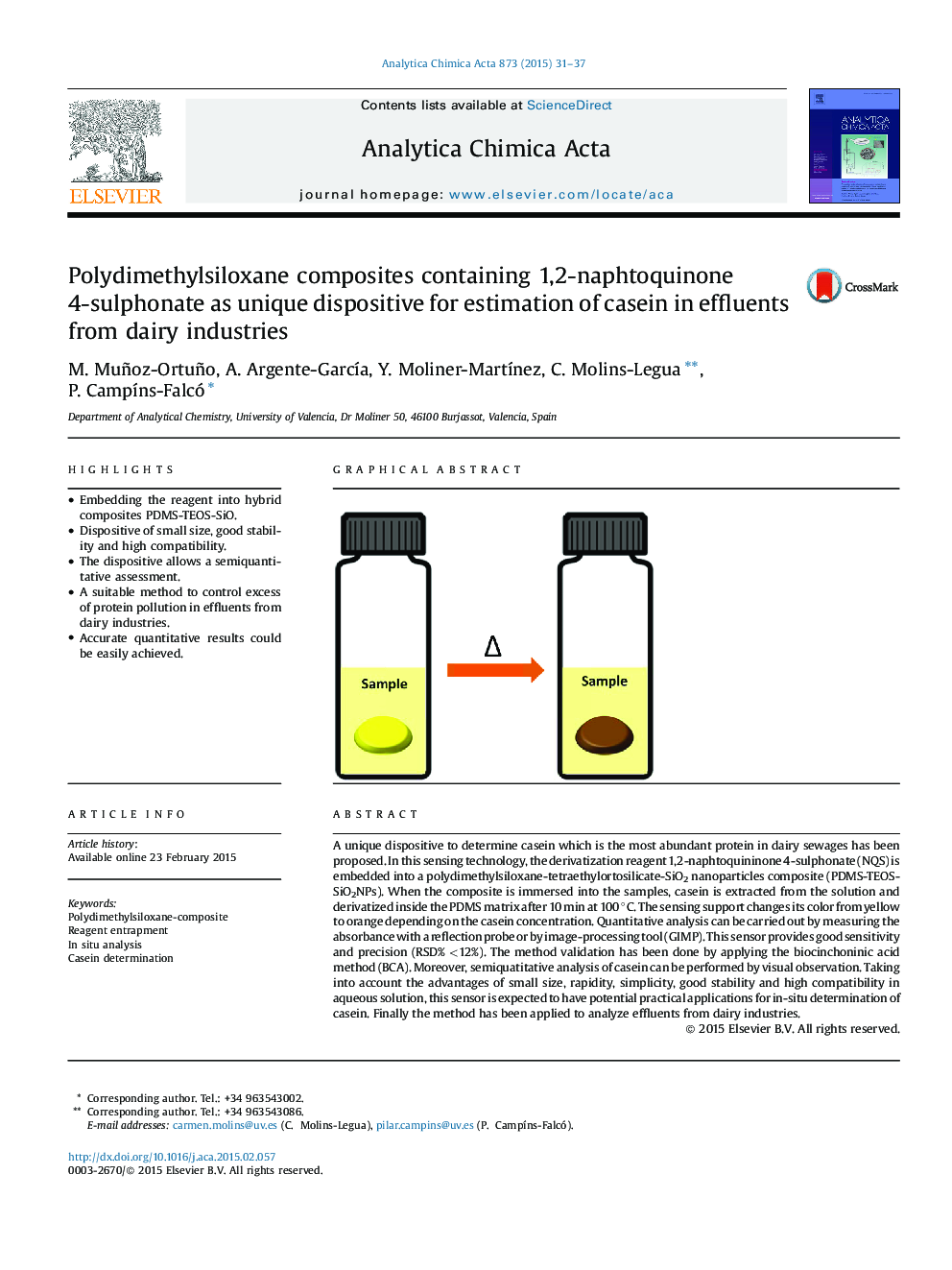| Article ID | Journal | Published Year | Pages | File Type |
|---|---|---|---|---|
| 1163817 | Analytica Chimica Acta | 2015 | 7 Pages |
•Embedding the reagent into hybrid composites PDMS-TEOS-SiO.•Dispositive of small size, good stability and high compatibility.•The dispositive allows a semiquantitative assessment.•A suitable method to control excess of protein pollution in effluents from dairy industries.•Accurate quantitative results could be easily achieved.
A unique dispositive to determine casein which is the most abundant protein in dairy sewages has been proposed. In this sensing technology, the derivatization reagent 1,2-naphtoquininone 4-sulphonate (NQS) is embedded into a polydimethylsiloxane-tetraethylortosilicate-SiO2 nanoparticles composite (PDMS-TEOS-SiO2NPs). When the composite is immersed into the samples, casein is extracted from the solution and derivatized inside the PDMS matrix after 10 min at 100 °C. The sensing support changes its color from yellow to orange depending on the casein concentration. Quantitative analysis can be carried out by measuring the absorbance with a reflection probe or by image-processing tool (GIMP). This sensor provides good sensitivity and precision (RSD% <12%). The method validation has been done by applying the biocinchoninic acid method (BCA). Moreover, semiquatitative analysis of casein can be performed by visual observation. Taking into account the advantages of small size, rapidity, simplicity, good stability and high compatibility in aqueous solution, this sensor is expected to have potential practical applications for in-situ determination of casein. Finally the method has been applied to analyze effluents from dairy industries.
Graphical abstractFigure optionsDownload full-size imageDownload as PowerPoint slide
